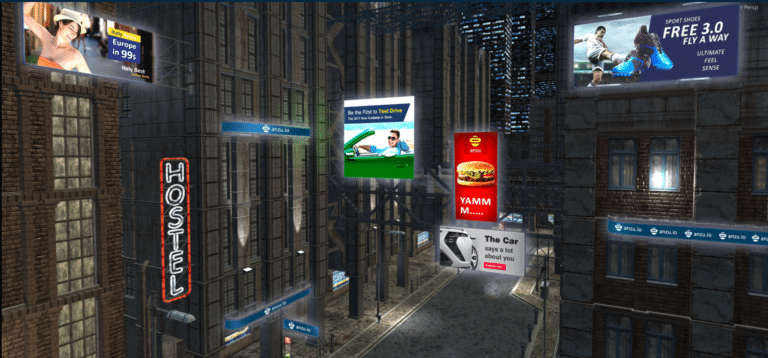
Early television ads often showed a solitary individual reading a script for Ovaltine or Lucky Strike (or insert 1940’s quintessence). The reason: that’s the way it was done in radio. It took time for TV ads to grow into their own skin.
This process of “habit creep,” is common in emerging media and begs questions of how advertising in VR will play out. Meanwhile, it’s being trumpeted throughout the ad world as the next big medium.
Indeed, within the exploding VR topic, a major headline is its broad applicability. It’s all about gaming now, but it will grow into retail, enterprise, education and — for better or worse — ads.
This stems from the fact that a lot of VR content will be media… and just like any media, a decent portion will be ad supported. Also like other media, success will come from “native” thinking.
What exactly is native thinking? It’s designing formats that take to heart the exact parameters of the device or form factor, as opposed to simply porting pre-existing media to a new device or screen size.
“The impulse in moving from video will be to apply it to VR,” said Framestore VR’s Tyler Hopf in a recent webinar. “But applying pre-roll to VR won’t work. People won’t want to be placed inside [an ad]. So we have to figure out ways to create valuable ad experiences.”
The definition of what’s native and valuable in VR will be discovered through experimentation. Google recently examined this concept through usage data, showing that developers should optimize for new consumption patterns like longer session lengths.
“In VR, we have positional head tracking data,” said EEVO CEO Alejandro Dinsmore on the same webinar. “We can Overlay 3d objects on top of video such as dynamic product placement. We can place dynamic 3d objects in blank spaces and measure the feedback.”
This brings up another “native” aspect of VR beyond creation of ad experiences: analytics. There too, it will take native thinking and not imposing old metrics on new formats and consumption patterns. Thrillbox and ADVR have echoed this thinking, among others.
“VR has 100 percent viewability,” said Airpush’s Cameron Peebles. “In other media like online and broadcast, you can’t measure people truly viewing. [VR] is the first medium where you can validate that. And heat mapping takes that further.”
My prediction is that winning ad formulas won’t involve banners and pre-roll videos. It will instead be some version of what we now know as content marketing, involving immersive experiences that are brought to you by a given brand.
But the most native thinking will come from VR’s immersive ability to emulate the use or essence of consumer products. This gets beyond the toolbox of ad copy or creative and instead graduates to heavier artillery to demonstrate products.
“Think of an auto dealer,” said Tyler. “There are multiple KPIs to get a user to an experience and visit [the dealership] in the real world. VR can skip those steps and get right to the experience.”
For a deeper dive on AR & VR insights, see ARtillry’s new intelligence subscription, and sign up for the free ARtillry Weekly newsletter.
Disclosure: ARtillry has no financial stake in the companies mentioned in this post, nor received payment for its production. Disclosure and ethics policy can be seen here.
Header image credit: Anzu.io
